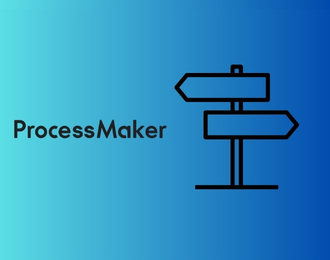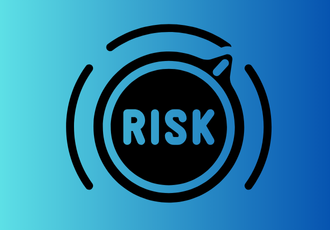What is fraud detection automation?
Fraud detection automation is an intelligent system that continuously monitors financial transactions and business processes to identify suspicious patterns and potential fraud in real-time, helping organizations protect revenue and maintain compliance. A major insurance provider implementing automated fraud detection was able to reduce fraudulent claims by 37% within six months by analyzing historical data patterns, flagging unusual claim frequencies, and detecting duplicate submissions before payment processing. Without such automation, organizations risk substantial financial losses, damaged reputation, and regulatory penalties, as manual review processes typically catch only 10-15% of fraudulent activities while consuming significant staff hours and introducing delays that frustrate legitimate customers and create operational bottlenecks.
How to Automate fraud detection automation
In today's high-stakes financial landscape, manual fraud detection processes are drowning organizations in a sea of false positives, delayed responses, and mounting compliance risks. Security teams find themselves trapped in an endless cycle of reactive investigations — manually sifting through thousands of transactions, struggling to distinguish genuine threats from routine activities, while sophisticated fraudsters exploit the precious minutes lost in human review cycles. The financial toll is staggering: organizations lose an average of 5% of their annual revenue to fraud, while the hidden costs of manual detection — overtime expenses, missed genuine fraud cases, and customer frustration from legitimate transactions being flagged — create an operational nightmare that threatens both profitability and reputation. Fraud detection automation emerges as the revolutionary solution that transforms this chaotic landscape into a precision-driven defense system, delivering up to 90% reduction in false positives, 75% faster threat response times, and measurable ROI within the first quarter of implementation through dramatically reduced investigation costs and prevented losses.
FlowForma Copilot transforms this complex automation journey into an intuitive, guided experience that puts sophisticated fraud detection capabilities within reach of any organization — regardless of technical expertise. Through intelligent process structuring that responds to simple text prompts, uploaded diagrams, or even voice commands, Copilot automatically builds comprehensive fraud detection workflows complete with smart rules, conditional logic, and automated responses that adapt to your unique risk profile. The platform's revolutionary approach eliminates months of traditional development time, allowing you to design, test, and deploy enterprise-grade fraud detection systems in minutes rather than quarters, while its dynamic rule engine ensures your automated processes evolve with emerging fraud patterns and regulatory requirements. What if you could deploy a fully customized fraud detection system that learns from your data, adapts to new threats, and delivers measurable results — all before your next team meeting?
Step-by-Step Implementation
- With FlowForma Copilot, creating a structured fraud detection automation process is effortless. Provide a text prompt, upload a form or flow diagram, or use voice input to get started!
- FlowForma Copilot automatically structures your fraud detection automation process using steps, questions, and rules at lightning speed.
- Review your fraud detection automation process, and once satisfied, click “Build” to bring it to life.
- Open each section to review the questions and rules suggested by Copilot. Click here to define the conditions dynamically to fit your requirements.
- Once done defining, click "OK"
- Define the actions that should take place when they are met. Click “Save” to apply your logic.
- After customizing your fraud detection automation process with rules and automation, click “Save” to securely store all changes.
- Click “Test Form” to preview how your process functions in a real-world scenario.
- At the top, you'll see the entire fraud detection automation process is seamlessly structured in minutes with FlowForma Copilot! Thanks to smart rules and automation, your fraud detection automation process is now fully optimized and ready to deploy — effortlessly transforming the way you work!
Key Components of Automated Fraud Detection Systems
Real-Time Transaction Monitoring
Modern fraud detection systems analyze transactions as they occur, using machine learning algorithms to identify patterns that deviate from normal behavior. These systems process millions of data points per second, including transaction amounts, locations, merchant categories, and user behavior patterns to flag suspicious activities instantly.
Risk Scoring and Threshold Management
Automated systems assign risk scores to each transaction based on multiple factors such as transaction velocity, geographical location, device fingerprinting, and historical user behavior. Organizations can customize risk thresholds to balance fraud prevention with customer experience, ensuring legitimate transactions proceed smoothly while flagging high-risk activities for review.
Machine Learning and Pattern Recognition
Advanced fraud detection leverages artificial intelligence to continuously learn from new fraud patterns and adapt detection rules accordingly. These systems analyze historical fraud cases to identify subtle indicators that human reviewers might miss, improving detection accuracy over time while reducing false positives.
Industry-Specific Fraud Detection Applications
Banking and Financial Services
Financial institutions use automated fraud detection to monitor credit card transactions, wire transfers, and account access patterns. These systems can detect card skimming, account takeovers, and money laundering activities by analyzing spending patterns, login behaviors, and cross-referencing with known fraud databases.
E-commerce and Retail
Online retailers implement fraud detection to identify fake accounts, payment fraud, and return abuse. Systems analyze customer behavior, shipping addresses, payment methods, and purchase patterns to prevent chargebacks and protect against synthetic identity fraud.
Insurance Claims Processing
Insurance companies automate fraud detection in claims processing by analyzing claim patterns, medical records, and historical data to identify potentially fraudulent claims. These systems can detect staged accidents, inflated damages, and duplicate claims across multiple insurers.
Implementation Challenges and Best Practices
Data Quality and Integration
Successful fraud detection automation requires high-quality, integrated data from multiple sources. Organizations must ensure data consistency, completeness, and real-time availability across all systems. Poor data quality can lead to increased false positives and missed fraud cases.
Balancing Security and User Experience
The challenge lies in detecting fraud without creating friction for legitimate customers. Effective systems use adaptive authentication, allowing trusted users to proceed with minimal interference while applying additional security measures for high-risk transactions.
Regulatory Compliance and Reporting
Automated fraud detection systems must comply with industry regulations such as PCI DSS, GDPR, and anti-money laundering (AML) requirements. Systems should maintain comprehensive audit trails and generate compliance reports automatically.
Measuring Success and ROI
Key Performance Indicators
Organizations should track metrics including fraud detection rate, false positive rate, investigation time per case, and cost per transaction reviewed. Successful implementations typically see 60-80% reduction in manual review time and 40-50% improvement in fraud detection accuracy.
Cost-Benefit Analysis
Calculate ROI by comparing prevented fraud losses against system implementation and operational costs. Include savings from reduced manual investigation time, improved customer satisfaction, and avoided regulatory penalties. Most organizations achieve positive ROI within 6-12 months of implementation.
Continuous Optimization
Regular system tuning based on performance metrics ensures optimal results. This includes adjusting risk thresholds, updating detection rules, and incorporating feedback from fraud analysts to improve system accuracy and reduce false positives.
Conclusion
Fraud detection automation transforms manual, error-prone processes into intelligent, real-time monitoring solutions that can reduce fraudulent activities by up to 37% while achieving 90% reduction in false positives. This comprehensive guide has outlined the essential steps for implementing automated fraud detection systems, from initial setup through ongoing optimization, demonstrating how organizations can protect revenue while enhancing customer experience.
To successfully implement fraud detection automation, begin by assessing your current fraud detection processes and identifying high-risk areas within the first week. Establish baseline metrics for detection rates, false positives, and investigation times to measure improvement. Start with automating routine checks for duplicate submissions and unusual transaction patterns, then gradually expand to more sophisticated pattern recognition. Remember to maintain human oversight for complex cases, regularly update detection rules to stay ahead of emerging threats, and ensure your automated workflows comply with industry regulations and maintain comprehensive audit trails.
FlowForma's intelligent process automation platform makes sophisticated fraud detection accessible to organizations of any size, enabling you to deploy enterprise-grade systems in minutes rather than months while achieving measurable ROI within the first quarter. With its dynamic rule engine and adaptive learning capabilities, FlowForma ensures your fraud detection system evolves with emerging threats while maintaining the user-friendly interface that makes advanced fraud prevention achievable for teams at any technical level. Schedule a personalized demo today to discover how FlowForma can help you reduce fraud losses by up to 37% while cutting investigation time by 75% - and see your custom fraud detection workflow built live during the session.
.png) By
By 




